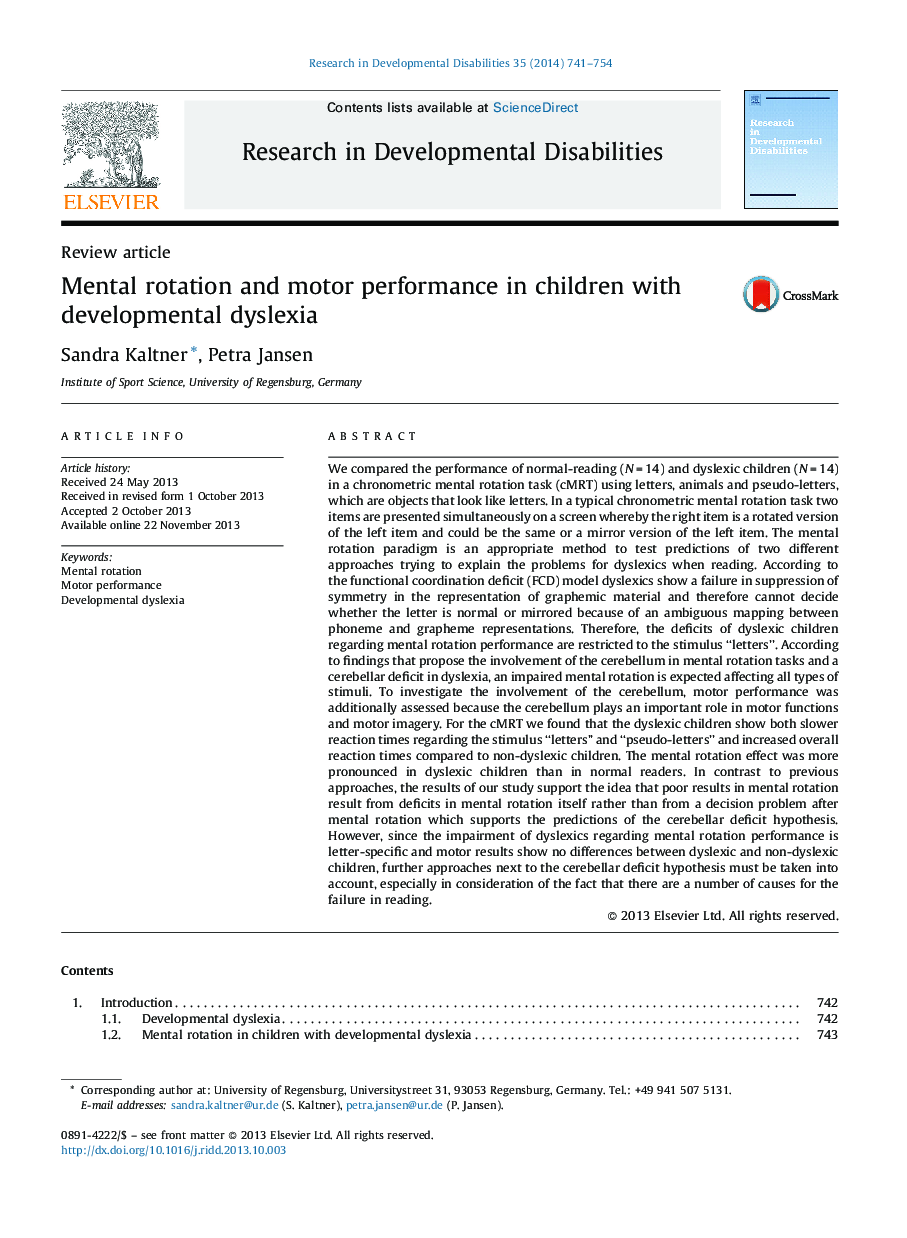| کد مقاله | کد نشریه | سال انتشار | مقاله انگلیسی | نسخه تمام متن |
|---|---|---|---|---|
| 371398 | 621920 | 2014 | 14 صفحه PDF | دانلود رایگان |
• Dyslexic children had a slower overall reaction time than non-dyslexic children.
• Dyslexics show higher reaction times in “letters” and “pseudo-letters”, but not in “animals” compared to the controls.
• The increase of reaction times with increasing angles is more pronounced in dyslexic children than in the control group.
• Dyslexic children do not differ from non-dyslexic children in their motor performance.
We compared the performance of normal-reading (N = 14) and dyslexic children (N = 14) in a chronometric mental rotation task (cMRT) using letters, animals and pseudo-letters, which are objects that look like letters. In a typical chronometric mental rotation task two items are presented simultaneously on a screen whereby the right item is a rotated version of the left item and could be the same or a mirror version of the left item. The mental rotation paradigm is an appropriate method to test predictions of two different approaches trying to explain the problems for dyslexics when reading. According to the functional coordination deficit (FCD) model dyslexics show a failure in suppression of symmetry in the representation of graphemic material and therefore cannot decide whether the letter is normal or mirrored because of an ambiguous mapping between phoneme and grapheme representations. Therefore, the deficits of dyslexic children regarding mental rotation performance are restricted to the stimulus “letters”. According to findings that propose the involvement of the cerebellum in mental rotation tasks and a cerebellar deficit in dyslexia, an impaired mental rotation is expected affecting all types of stimuli. To investigate the involvement of the cerebellum, motor performance was additionally assessed because the cerebellum plays an important role in motor functions and motor imagery. For the cMRT we found that the dyslexic children show both slower reaction times regarding the stimulus “letters” and “pseudo-letters” and increased overall reaction times compared to non-dyslexic children. The mental rotation effect was more pronounced in dyslexic children than in normal readers. In contrast to previous approaches, the results of our study support the idea that poor results in mental rotation result from deficits in mental rotation itself rather than from a decision problem after mental rotation which supports the predictions of the cerebellar deficit hypothesis. However, since the impairment of dyslexics regarding mental rotation performance is letter-specific and motor results show no differences between dyslexic and non-dyslexic children, further approaches next to the cerebellar deficit hypothesis must be taken into account, especially in consideration of the fact that there are a number of causes for the failure in reading.
Journal: Research in Developmental Disabilities - Volume 35, Issue 3, March 2014, Pages 741–754
